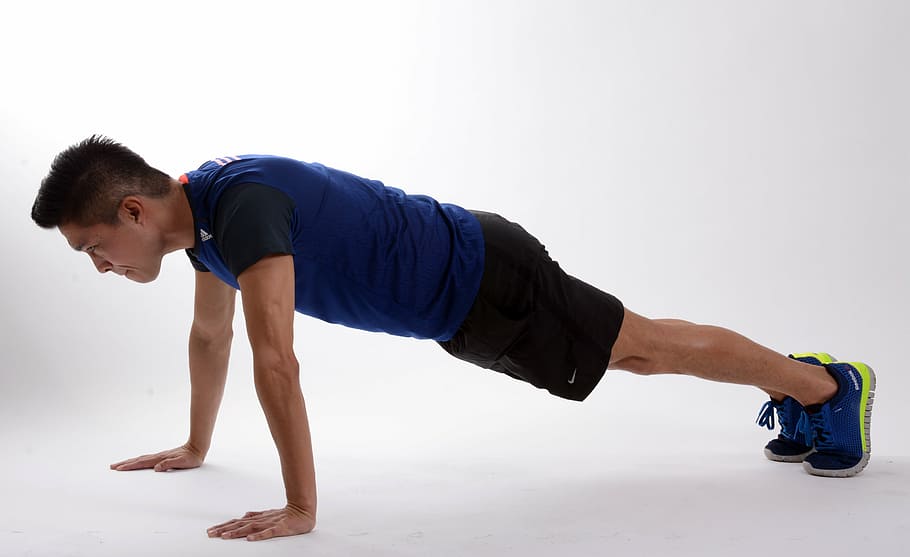Isotonic Exercise
Have you ever come across the term “Isotonic” when going to the gym? It might seem like an exotic form of exercise for those not well versed with technical workout terms.
However, it can be the case that you most probably have been performing isotonic exercises without knowing the technical term. That is nothing to be embarrassed about, as most professionals will also be unfamiliar with the term.
Isotonic exercises refer to those exercises that allow the muscles to shorten when carrying or lifting weight. It means the constant movement of a fixed or free weight while performing weight training.
There are many benefits that come with isotonic training; gaining mass is the most prolific one. This article will discuss the various benefits you can get while performing an isotonic exercise.
What Is An Example Of An Isotonic Exercise?
As mentioned in the introduction of this article, you might already be performing some form of isotonic exercise. You might be confused with the term because it is not usually used in the gym.
A classic example of an isotonic exercise is a push-up. Push-up is one of the most common forms of this training method, if not the most. People of all ages, sex, and sizes perform push-ups, as it is a simple and effective way to keep their bodies fit.
Performing push-ups does not require equipment and can be done in any space. You don’t have to go to the gym to do push-ups, helping you save money.
If you have been staying away from physical exercises for a while, you can start again by taking up push-up workouts during your spare time. Let us make it easier for you by showing you the proper form of performing push-ups.

How To Perform Push-ups
Most people think the way to achieve a fit body through push-ups is to do it hundreds of times. However, gaining the most out of push-ups depends on maintaining the correct form.
Follow these steps listed below to do a proper push-up:
- Place your palms on the floor and get into a plank position.
- Ensure that your arms are in line with your shoulders so that the elbows do not lock.
- If you leave your core loose, your back will not have the correct posture while pushing down. Keep your core engaged for maintaining the alignment between the hip and the neck.
- Once you have achieved that form, fold your elbows slowly until they come to a 90-degree position.
- After going down, push yourself back up and keep repeating till you feel tiredness in your elbow joints.
- Remember to engage your core till your push-up routine is over.
The benefits of push-ups come in the form of stronger chest muscles, triceps, biceps, shoulders, upper-back muscles, etc. It also helps your muscles to develop endurance and improves your stamina.
You can also do other forms of push-ups once you have mastered the basic version. Clap push-ups, diamond push-ups, and decline push-ups are some of the push-up variations.
Benefits of Isotonic Exercise
Isotonic exercise has many benefits as it helps keep the body fit and in shape. The results depend on the type of isotonic exercises you take up.
If you do a lot of weight-lifting, your body mass will increase. Other forms of isotonic training will help build endurance, strengthen muscles, improve stamina, etc. So, there are various benefits of isotonic exercise.
In general, doing daily physical exercises leads to an increase in our lifespan. When we work out, it helps our body to release stress. When the body is tired, it is also possible to go to sleep on time, which is a healthy practice.
Let us look at the many benefits you can achieve by performing isotonic exercises daily:
- Isotonic exercises like weight-lifting, dead-lift, dumbbell lunge, etc., will help your body gain mass.
- Push-ups and pull-ups will enhance your endurance and build muscle strength.
- Isotonic exercises will help your movements and make you more flexible.
- The joints are made stronger through training methods like squats and planks.
- The more you sweat from working out, the more you release all kinds of toxic substances from your body. This helps you improve your mood and control your emotions.
- Daily exercises help improve your memory. Studies have shown that working out can help people develop significant improvements in the part of the brain that enables us to store memories.
- Isotonic exercises help to keep you safe from cardiac arrests, various forms of cancer, diabetes, arthritis, etc.
- Daily workouts help your body lose weight, and weight loss leads to a decrease in stress. Some people go into depression when they are overweight, so exercises are an excellent way to build positivity in the mind and body.
- You can see significant improvements in your cognitive functions like organizing your day by making plans, doing different tasks, etc.
Do Isotonic Exercises Build Muscle?
Isotonic exercises are those training methods that also involve lifting weights like dumbbells, barbells, etc. Dead-lifts are also part of isotonic exercises. So, it is apparent that isotonic exercises help to build muscle and improve endurance.
In fact, most isotonic exercises can help build muscle. Pull-ups help in increasing the muscle mass in the biceps. Similarly, doing push-ups is also great for building muscles in your chest, triceps, core, and biceps.
Isotonic exercises develop muscular strength and also increase body mass. This exercise method can be seen in the gym daily. Isotonic exercises can also comprise the regular chores that you do daily, like picking up grocery bags, carrying wood and bricks, etc.
Isotonic exercise is defined as the shortening of a contracting muscle when lifting some form of weight. So, in simple terms, it can be defined as the forms of exercise related to the motion of the muscle
Examples of isotonic training include bench-pressing, dead-lifts, push-ups, pull-ups, running, climbing staircases, etc. All these forms of exercises help in muscle-building.




